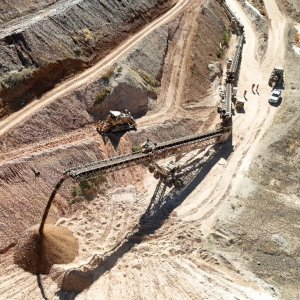Mexico Needs Autonomous Infrastructure Planning

STORY INLINE POST
Q: What are the biggest areas of opportunity with Mexico’s infrastructure development?
A: Planning and preparation are the most important phases in the infrastructure development cycle, yet these phases have great areas of opportunities in Mexico. A thorough planning stage is essential in order to identify the country’s infrastructure needs and to assess the possible solutions and select the appropriate one. Planning is also essential because in this stage the government defines a long-term vision in terms of infrastructure development, as well as the strategies and goals that will help accomplish the vision. Long-term planning is crucial to initiate a correct preparation and tender of the project. Moreover, it provides certainty to the private sector and society on what the government will invest in the following years. There are two main elements of a good infrastructure plan, the first is a long-term perspective and the second is that it has to be integral. To ensure the implementation of the plan despite the changes in the government, an independent and trans-sexennial body should be in charge of planning Mexico’s infrastructure and provide congruence to the development of infrastructure across all sectors. This body would improve synergies and investment productivity, as well as dictate the country’s priorities and find the synergies to be created within sectors.
Q: If an independent body for planning was created, how can you ensure it would have an impact on infrastructure development?
A: In countries such as Australia or the UK, a planning entity has existed for some years; however, these entities needed a period to mature and develop capabilities in order to influence the development of infrastructure in their countries. Besides, the legal framework must be modified to confer specific responsibilities to the entity, and of course it should have enough resources to perform its activities. It is crucial that this body is completely autonomous if its decisions are to build trust among the industry’s players.
Q: Why is there a lack of USPs and what characteristics should they have to expedite approval?
A: The government wants to continue encouraging the development of USPs because this is a way in which the private sector can participate in the preparation of projects. Of course, when a project is self-financed, a USP has more possibilities to be approved and tendered; however, the proponent must show the government that the project is self-financed. If the projects are not self-financed there are other options such as a mixed PPP or a pure PPP. In both cases the government makes a payment to ensure the project is viable. In the case of USPs, it is essential that tenders are competitive to encourage other companies to participate. The government is looking for ways to ensure this and that the premium provided to the proponent of the USP is fair.
Q: What projects should the government give priority to in terms of road and rail?
A: The largest challenge is Mexico’s cities and developing the country’s urban networks, which is where the money should be allocated in the coming years. There needs to be more investment in MTS and other urban transportation alternatives, especially because options like second floors are extremely expensive and not a viable solution in the long term. The Mexico-Toluca Interurban Train will drastically reduce the quantity of cars but any further notions of passenger trains between cities have been largely overlooked because the government has placed too much focus on the country’s road development.
Q: Will the Mexico-Toluca Interurban Train be completed on time and what challenges will it face?
A: The Mexico-Toluca Interurban train is an immense challenge. Environmental, social and rights of way issues have delayed the project. Hopefully the social and environmental issues will not cause any further delays in the construction of the project. The next challenge will be the connection between the train and Metro Observatorio, since the current station will have to be adapted to receive more people during peak hours.























